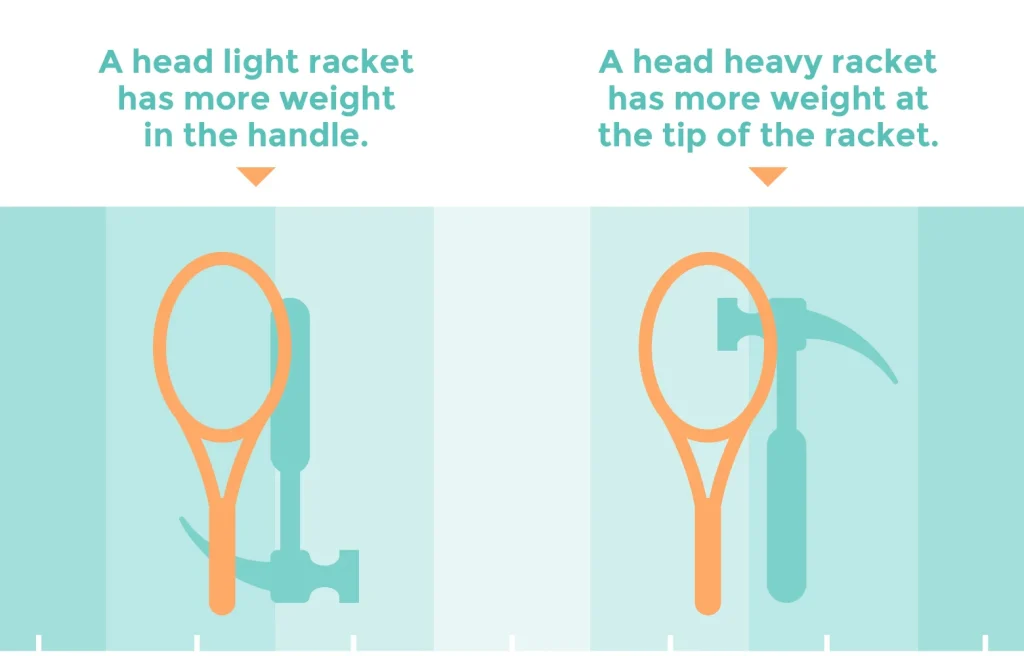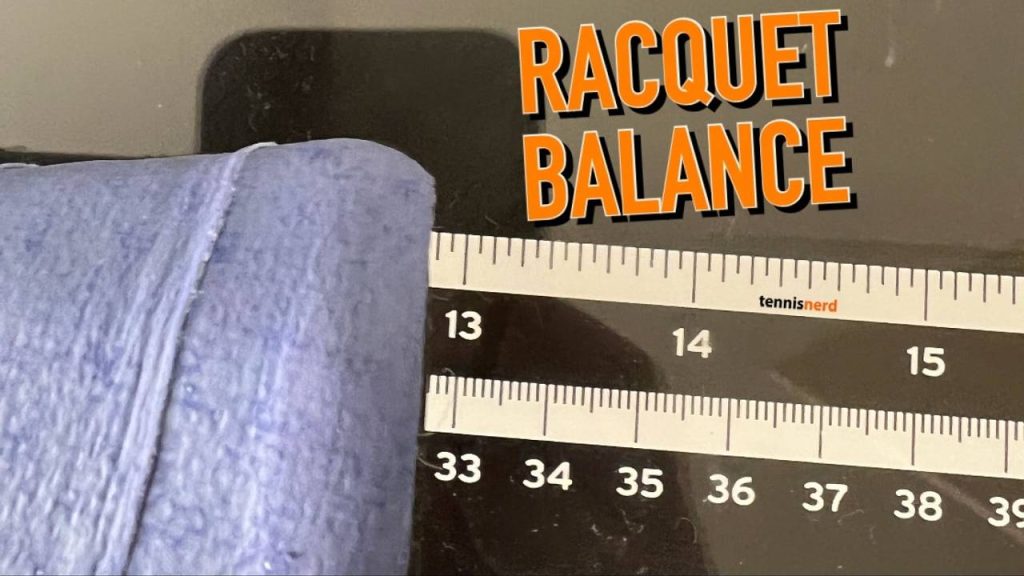The racquet balance can be either head-light = More weight towards the handle or head-heavy = More weight towards the head.
But it can of course also be Balanced = equal weight distribution between handle and head.
The more weight in the head – the higher the swing weight and power level. The trade-off of that is maneuverability and control.

Most racquets are head-light, but some players like head-heavy racquets. One example is Carlos Moya who used a racquet with a balance of 7 pts head heavy. Most players seem to use a balance between 2 pts HL (33.5 cm) to 6 pts HL (32.4) on a strung racquet.
Racquet balance points table
You can use the table for racquet balance to convert in between head light points, inches and centimeters. Remember to always check if the racquet balance is listed unstrung or strung. On Tennis Warehouse, it is mostly strung, but when listed on a racquet, it is always unstrung.
Adding strings to a racquet usually shifts the balance point by one centimeter towards the head. Strings weigh around 20g on average.
There is no exact science about what balance point will suit a certain player. Using head-heavy racquets have been seen leading to tennis elbow to certain players, so to maintain maneuverability, it is better to keep it fairly head-light, but make sure you also have some mass in the head since otherwise the racquet will lack stability.
| Points | Inches | Centimeters |
| 0 | 13.5 | 34.290 |
| 1 | 13.375 | 33.973 |
| 2 | 13.25 | 33.655 |
| 3 | 13.125 | 33.338 |
| 4 | 13 | 33.020 |
| 5 | 12.875 | 32.703 |
| 6 | 12.75 | 32.385 |
| 7 | 12.625 | 32.068 |
| 8 | 12.5 | 31.750 |
| 8.5 | 12.4375 | 31.591 |
| 9 | 12.375 | 31.433 |
| 10 | 12.25 | 31.115 |
| 11 | 12.125 | 30.798 |
| 12 | 12 | 30.480 |
| 13 | 11.875 | 30.163 |

